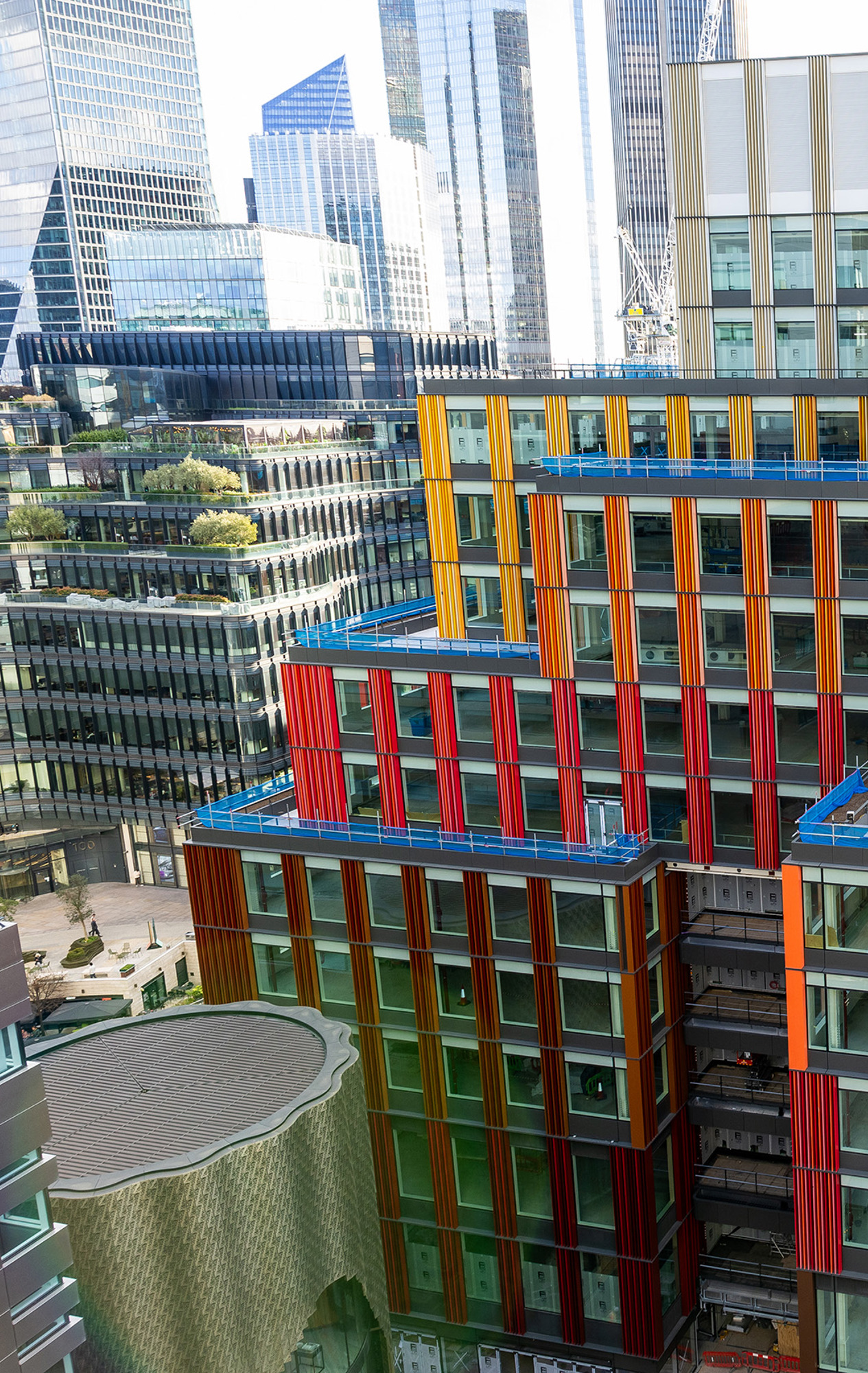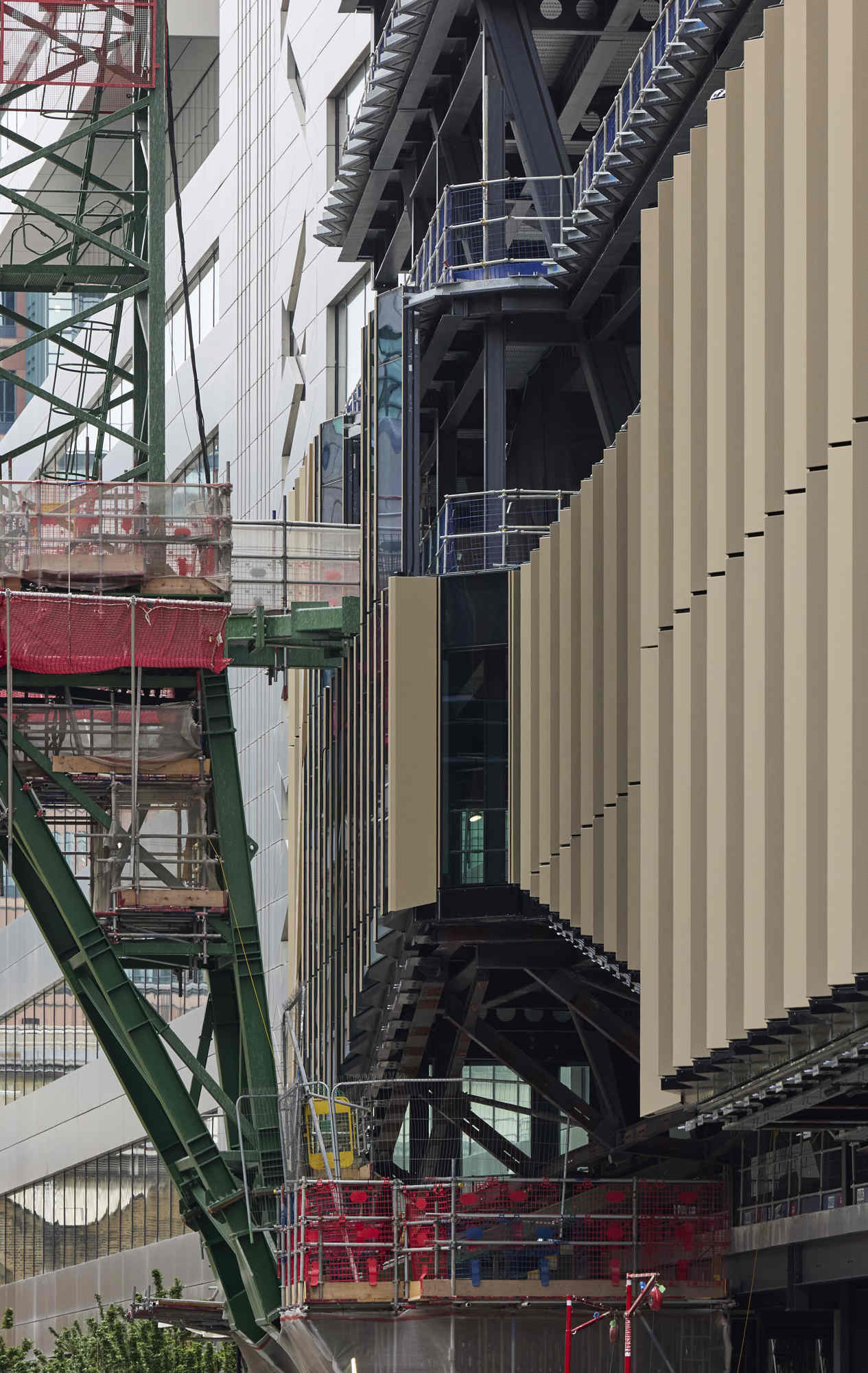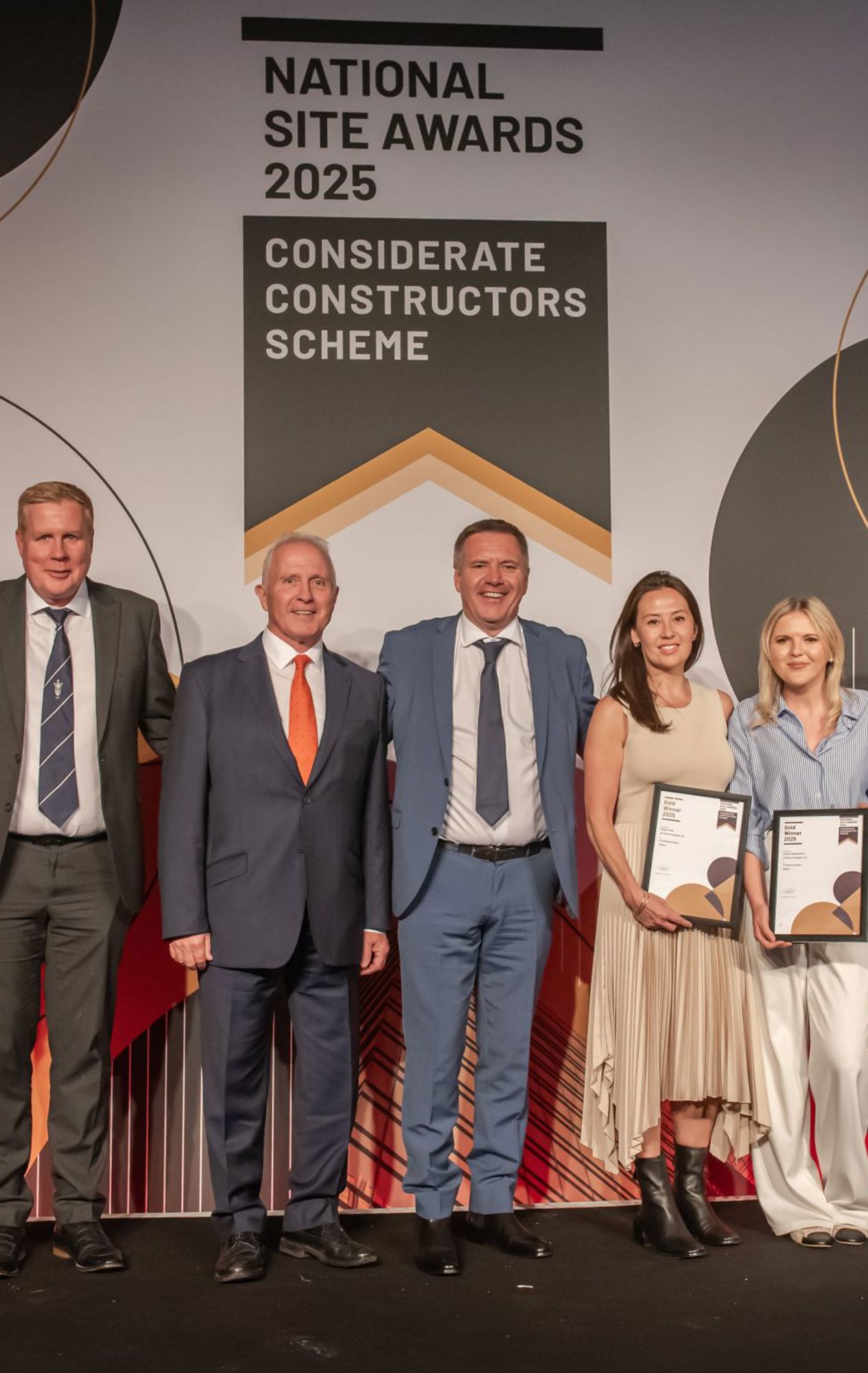Raptor cranes helping raise the bar when it comes to productivity
 On the top of the two huge slipform cores, some 120m high and rising above our 2 Finsbury Avenue site in London, another great example of engineering excellence is making a big contribution to productivity on this landmark City project.
On the top of the two huge slipform cores, some 120m high and rising above our 2 Finsbury Avenue site in London, another great example of engineering excellence is making a big contribution to productivity on this landmark City project.
Built onto each of the two slipform platforms is a Raptor crane, a type of plant designed for lifting in tight spaces, especially in confined inner-city sites and where air space restrictions are a major issue.
At 2 Finsbury Avenue, the cranes are deployed to feed the slipform process being used to construct the cores for the development’s dual high-rise towers of 23 and 37 storeys respectively.
On each core, 103 hydraulic jacks are being used to incrementally lift the 120 tonne rigs and the 60 tonne raptor cranes as the respective slipforms rise some 1.2m per day.
The inclusion of the raptor cranes avoids the need for a tower crane to be tied and climbed to feed the slipform construction, whilst freeing up the main tower cranes to construct the structural steelwork. Avoiding tying and climbing minimises weather delays and the significant disruption to lifting every time a new tie and mast section is added.
Whilst not unique, the use of Raptor cranes in this way is a somewhat unconventional approach.
2 Finsbury Avenue is British Land’s largest project to date and the final piece of the jigsaw in the current regeneration of Broadgate into a world class, seven-day, mixed-use central London destination.
It comprises dual high-rise towers, the 36-storey East Tower and the West Tower at 21-storeys. The towers will be instantly recognisable landmarks, characterised by innovative triangular patterns combining a solid and glazed sawtooth-shaped facade that supports double height spaces.






